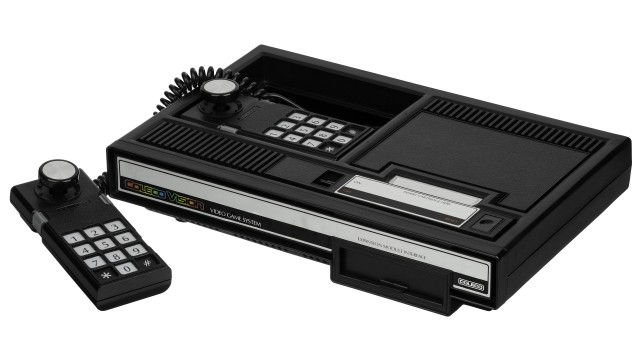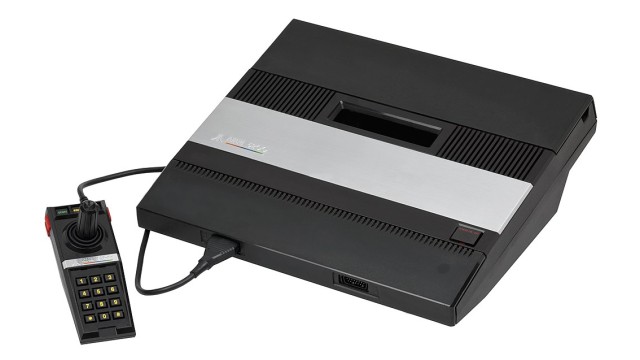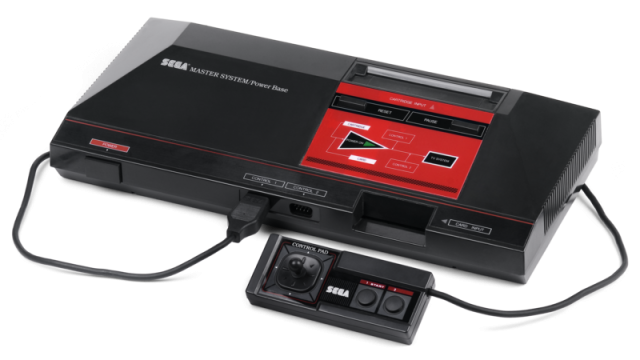
NES
Launches: 1983
Discontinued: 2003
Life span: 20 years
Units sold: 61 910 000
Generation: 3rd
Country releases of NES
 Japan: Japan: | 15/Jul/1983 | 14800 | ¥ |
 USA: USA: | 18/Oct/1985 | 179 | $ |
 Spain: Spain: | 01/Nov/1987 |
 NES technical specifications
NES technical specifications
CPU: MOS 6502 (8 bits)
Memory: 2 KB
 NES video specifications
NES video specifications
NES graphics capabilities.
Video chip: RP2C02 (NTSC) @ 5,37 MHz / RP2C07 @ 5,32 MHz (PAL)
Video connection: Radio Frequency
 NES audio specifications
NES audio specifications
NES sound capabilities.
Audio chip: Ricoh RP2A03 / Ricoh RP2A07
Audio mode: Mono
 Controllers of NES
Controllers of NES
 NES games support
NES games support
Support: Cartridge
NES games
Games library: 163
NES story
The Nintendo Entertainment System (NES), also known as the Famicom in Japan, is one of the most significant consoles in the history of video gaming. Its creation, development, launch, and market reception reflect not only the evolution of Nintendo as a company but also the broader revival of the video game industry in the 1980s. The NES played a pivotal role in resurrecting the industry after the video game crash of 1983 and established many of the standards and practices that continue to shape gaming today.
The creation of the NES was born out of Nintendo’s desire to enter the home console market during a time when video games were still in their infancy. In the late 1970s and early 1980s, Nintendo was primarily a toy and playing card company in Japan. It had experimented with electronic toys and early video game systems, including arcade games like Donkey Kong and Game & Watch handhelds, which were designed by the visionary Gunpei Yokoi. Building on the success of these products, Nintendo sought to develop a home console that could bring the arcade experience into people’s living rooms. This idea was not unique, as companies like Atari and Mattel had already released home consoles, but Nintendo aimed to create a system that was affordable, powerful, and capable of playing high-quality games.
The development of what would become the NES began in earnest in 1981, under the leadership of Masayuki Uemura, who was tasked with designing the console. Nintendo’s primary goal was to create a system that could play arcade-quality games while being accessible to a mass audience. The original plan was to develop a 16-bit system with advanced graphics capabilities, but the company ultimately decided to focus on a more cost-effective 8-bit system to keep the price low and ensure wide adoption. This decision was crucial, as it allowed the NES to be competitively priced while still offering superior performance compared to other home consoles of the time.
The result of this development process was the Family Computer (Famicom), which was released in Japan on July 15, 1983. The Famicom featured a red and white design, a compact body, and hardwired controllers. It utilized a custom 8-bit Ricoh 2A03 microprocessor, which provided the necessary power to run complex games while keeping costs down. The Famicom also employed ROM cartridges, which allowed games to be easily swapped and stored more data than previous consoles that used built-in games or simple plug-in controllers with preloaded titles. This cartridge-based system was revolutionary at the time, as it opened up endless possibilities for game developers and allowed for a much larger library of games.
Despite its innovative design, the Famicom’s initial launch in Japan was not without issues. Early units suffered from a hardware defect that caused the system to crash. Nintendo quickly addressed this problem by recalling the faulty units and replacing them with new ones, which helped to restore consumer confidence. Once these issues were resolved, the Famicom became a massive success in Japan, quickly becoming the best-selling console in the country. Its popularity was fueled by a strong lineup of games, including ports of successful arcade titles like Donkey Kong and Mario Bros..
The success of the Famicom in Japan set the stage for its entry into the international market.
As the Famicom gained traction in Japan, Nintendo began to explore the possibility of launching the console in North America. However, the timing was challenging, as the video game industry in the United States was in the midst of a severe downturn known as the video game crash of 1983. This crash was caused by a glut of low-quality games, poor business practices, and a loss of consumer confidence in video games as a whole. Companies like Atari, which had once dominated the industry, were struggling, and many retailers were wary of stocking video game products. Despite these challenges, Nintendo believed that the Famicom could succeed in the U.S. market if it was properly marketed and positioned as a high-quality entertainment device.
The process of bringing the Famicom to North America required significant modifications and rebranding efforts. Nintendo recognized that the Japanese design and branding might not resonate with American consumers, especially in the wake of the video game crash. To make the console more appealing to Western audiences, Nintendo redesigned the Famicom with a sleeker, more futuristic look. The new design, which would become the Nintendo Entertainment System (NES), featured a gray and black color scheme, a front-loading cartridge slot, and detachable controllers. The front-loading design was intended to mimic the look of a VCR, which was a popular and trusted consumer electronics device at the time. This design choice was meant to distance the NES from the failed video game consoles of the early 1980s and position it as a sophisticated piece of home entertainment equipment.
Nintendo also took a cautious approach to the U.S. launch by initially testing the market in New York City in late 1985. The launch was supported by an aggressive marketing campaign and a carefully curated selection of games that demonstrated the system’s capabilities. One of the key titles was Super Mario Bros., which would go on to become one of the most iconic and influential video games of all time. Super Mario Bros. showcased the NES’s ability to deliver rich, immersive gameplay experiences with colorful graphics, smooth scrolling, and memorable music. This game, along with others like Duck Hunt and Excitebike, helped to establish the NES as a must-have item.
The NES officially launched nationwide in the United States in 1986. Nintendo took several innovative steps to ensure the console’s success in a market still recovering from the video game crash. One of the most important strategies was the introduction of the Nintendo Seal of Quality, a mark that was placed on all licensed games and accessories. This seal indicated that a product had met Nintendo’s strict quality standards, which helped to rebuild consumer trust in video games. Nintendo also implemented strict licensing agreements with third-party developers, which allowed the company to maintain control over the content and quality of the games released on the NES. This approach contrasted sharply with the practices of companies like Atari, which had allowed virtually any developer to release games for its consoles, leading to the flood of poor-quality titles that contributed to the industry’s collapse.
The market reception of the NES was overwhelmingly positive, particularly in North America, where it quickly became the dominant console. The success of the NES is often credited with revitalizing the video game industry, which had been on the brink of collapse. The console’s popularity was driven by its impressive library of games, which included not only first-party titles like Super Mario Bros. and The Legend of Zelda but also third-party games from developers like Capcom, Konami, and Square.
These games introduced new genres, innovative gameplay mechanics, and memorable characters that would become staples of the gaming industry.
One of the most significant aspects of the NES’s success was its ability to appeal to a broad audience. While video games had previously been seen as a niche hobby, the NES helped to bring gaming into the mainstream. Its library included games that appealed to players of all ages and interests, from action-packed platformers to deep, story-driven RPGs. The NES also introduced many players to the concept of multiplayer gaming, with titles like Contra and Double Dragon allowing friends and family to play together on the same console.
In addition to its success in North America, the NES was also well-received in Europe and other regions, where it helped to establish Nintendo as a global leader in the video game industry. By the end of its life cycle, the NES had sold over 60 million units worldwide, making it one of the best-selling consoles of all time. The NES’s influence extended far beyond its hardware sales, however. It laid the foundation for many of the practices and standards that would define the video game industry for decades to come, including the use of cartridges, the importance of quality control, and the development of iconic franchises that continue to thrive today.
The legacy of the NES is profound, as it not only saved the video game industry from the brink of collapse but also set the stage for the modern era of gaming. Many of the franchises that began on the NES, such as Super Mario, The Legend of Zelda, and Metroid, have become some of the most beloved and enduring series in the history of gaming. The NES also introduced millions of people to the joys of video gaming, creating a new generation of gamers who would go on to support the industry’s growth and evolution in the years to come.
The creation of the Nintendo Entertainment System was a response to the changing dynamics of the early 1980s video game market. Its development focused on delivering a high-quality, accessible gaming experience, leading to innovations in hardware, game design, and business practices that would have a lasting impact on the industry. The NES’s launch, particularly in North America, was carefully planned and executed to overcome the challenges of a market recovering from a significant downturn. Its market reception was overwhelmingly positive, establishing Nintendo as a dominant force in the industry and revitalizing the global video game market. The NES remains a symbol of the golden age of gaming and a testament to Nintendo’s ability to innovate and lead in a highly competitive and evolving industry.
Next Nintendo console: Super Nintendo


